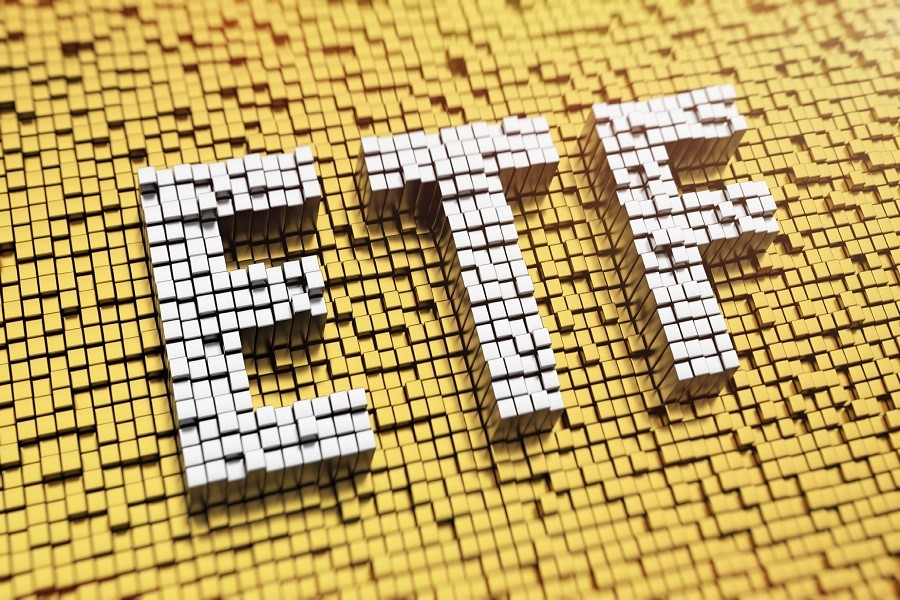

The rout in European bonds has set in motion what could become an “illiquidity doom loop” in the region’s investment-grade debt ETFs, Mizuho International warns.
While this month’s sell-off has inflicted only minor stress on most exchange-traded products, some have seen extreme gaps form between the price and the value of assets, signifying disorder in the underlying markets. That has reignited anxiety about fixed-income ETFs, which are more liquid than the assets they hold.
So far, ETFs have largely withstood one of the toughest liquidity tests they’ve ever faced, but Mizuho’s Peter Chatwell sees the beginning stages of the spiral taking place in funds such as the 10.2 billion euro ($11 billion) iShares Core EUR Corp Bond UCITS ETF (IEAC). The ETF’s price traded at a record 6.5% discount to its net-asset value this week.
Rampant volatility in bond markets makes it unappealing for middlemen known as authorized participants to step in to equalize the value of the ETF and the bonds underlying it. In normal times, the price dislocation would spur them to buy shares of a falling ETF in order to exchange them for the underlying bonds with the fund’s issuer, capturing a virtually risk-free profit.
Now, with stress mounting, fears are rising that investors rushing to redeem ETFs will exacerbate a sell-off in the underlying market as authorized participants channel bonds out of the fund. The rampant volatility has made it more difficult to unload the underlying bonds.
Mr. Chatwell warned the price dislocation may cause investors to abandon the ETFs, and argued that the region’s central bank should purchase European high-grade ETFs in addition to corporate bonds in order to reduce selling pressure on the underlying bonds.
‘Lose faith’
“ETF investors may lose faith in the ETF products, and sell even more, unless policy makers take action to break the loop,” Mr. Chatwell, Mizuho’s head of multi-asset strategy, wrote in a note Thursday. “Given the importance of corporate bond spreads in the transmission of ECB monetary policy to the real economy, we think the ECB should also consider measures to address this problem.”
Concerns about the economic fallout of the coronavirus have upended financial markets, unleashing historical turbulence across the bond spectrum and sapping liquidity.
While many strategists have long argued that such turmoil will cause ETFs to exacerbate the selling, so far the evidence for a liquidity spiral is scant, even as some of the largest fixed-income ETFs continue to trade at steep discounts. IEAC’s discount narrowed to 2.9% in the latest session.
But in the eyes of Dave Perlman at UBS Global Wealth Management, ETFs actually diminish the risk of such a doom loop.
“The ETF provides a mechanism for sellers and buyers to meet without selling the underlying bonds,” said Mr. Perlman, an ETF strategist. “The ETF wrapper helps slow the risk of the death spiral.”

AI is no replacement for trusted financial advisors, but it can meaningfully enhance their capabilities as well as the systems they rely on.

Prudential's Jordan Toma is no "Finfluencer," but he is a registered financial advisor with four million social media followers and a message of overcoming personal struggles that's reached kids in 150 school across the US.

GReminders is deepening its integration partnership with a national wealth firm, while Advisor CRM touts a free new meeting tool for RIAs.

The Texas-based former advisor reportedly bilked clients out of millions of dollars, keeping them in the dark with doctored statements and a fake email domain.

The $3.3 trillion tax and spending cut package narrowly got through the upper house, with JD Vance casting the deciding vote to overrule three GOP holdouts.
Orion's Tom Wilson on delivering coordinated, high-touch service in a world where returns alone no longer set you apart.
Barely a decade old, registered index-linked annuities have quickly surged in popularity, thanks to their unique blend of protection and growth potential—an appealing option for investors looking to chart a steadier course through today's choppy market waters, says Myles Lambert, Brighthouse Financial.
